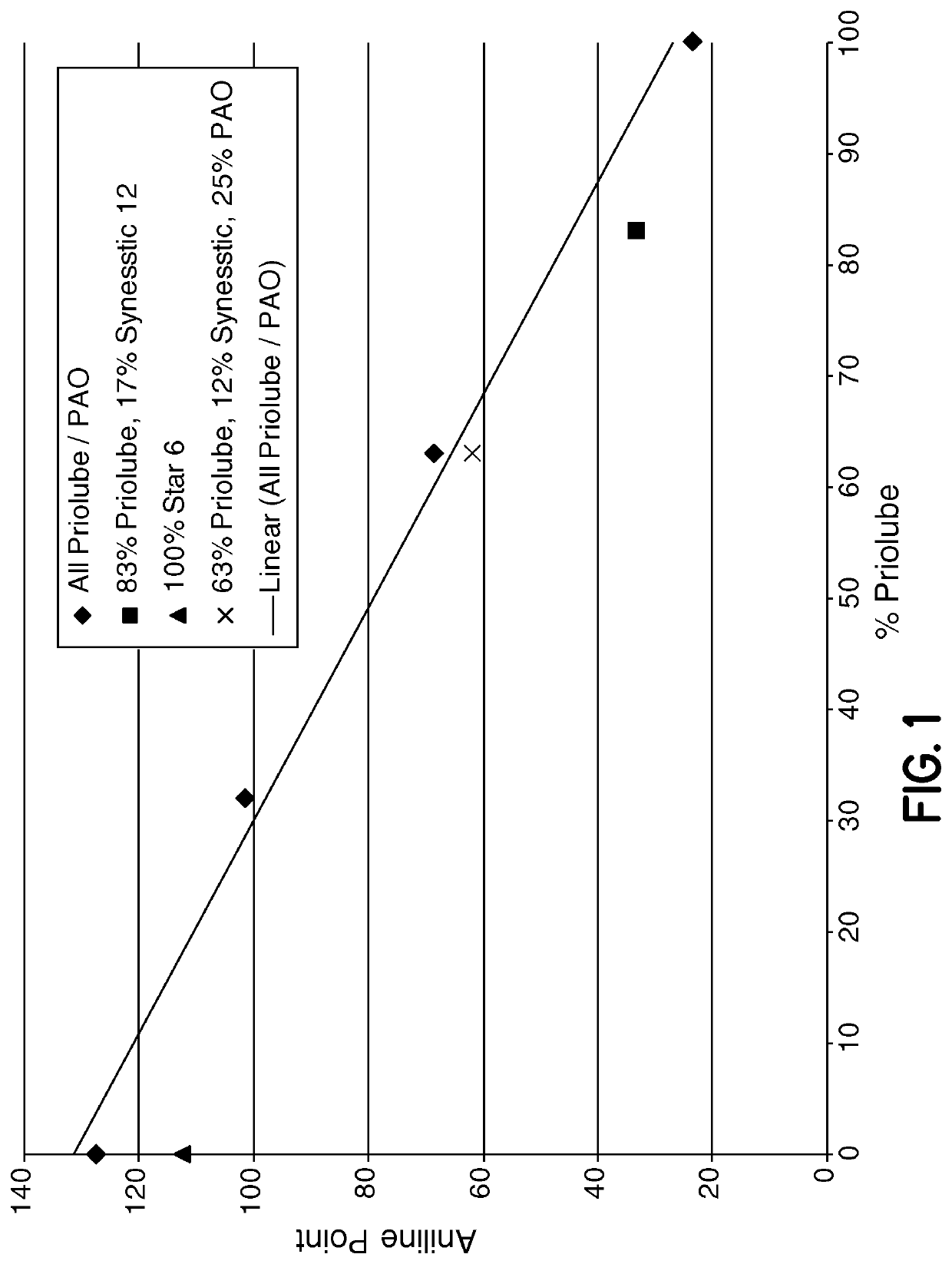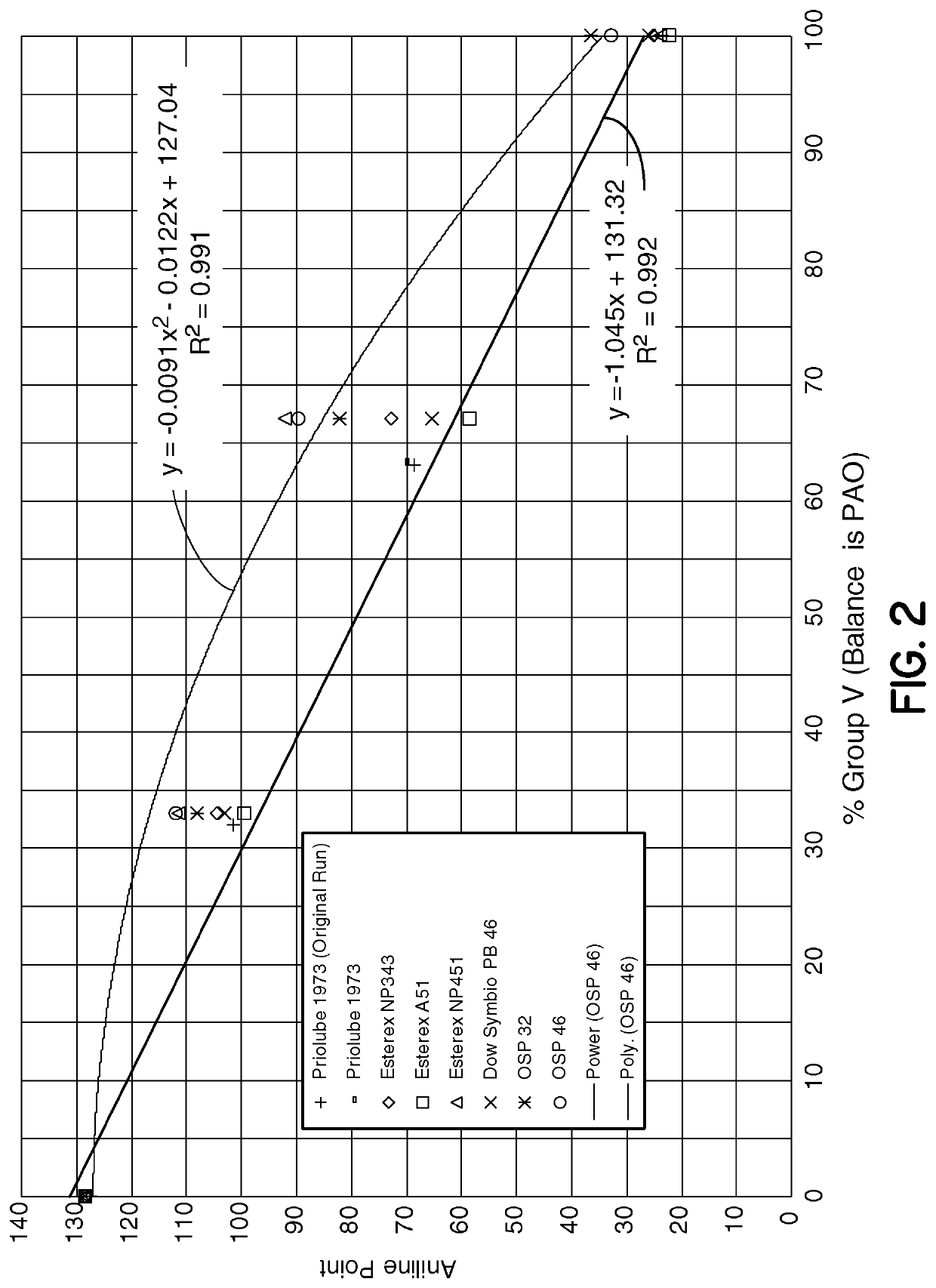Lubricant for preventing and removing carbon deposits in internal combustion engines
a technology for internal combustion engines and lubricants, which is applied in the direction of petroleum industry, lubricant compositions, base materials, etc., can solve the problems of hard carbon being the most difficult to remove, irreversible damage to the engine, and frequent carbon deposits, etc., to prevent and/or remove carbon buildup in internal combustion engines, prevent carbon buildup, and remove carbon buildup
- Summary
- Abstract
- Description
- Claims
- Application Information
AI Technical Summary
Benefits of technology
Problems solved by technology
Method used
Image
Examples
Embodiment Construction
[0012]The lubricant of the present invention includes a base oil blend, which is a mixture of different base stocks in combination with typical additives normally found in lubricant formulations used for internal combustion engines. The base oil, which is a blend of two or more types of base oils, is blended together to establish a solvency which is adequate to control / remove the carbon deposits. In the present invention, solvency can be defined in various manners. One way of defining solvency is the aniline point. The aniline point is the minimum equilibrium solution temperature for equal volumes of aniline and a sample. In this case, the sample would be the base oil blend. It should be noted that when specifying the range of aniline point for the desired base oil blend it is understood that up to 25% of the formula may consist of other additives. Additives are frequently carried in up to 50% base oil. Thus, all base oil in the formulation, including base oil added with the additiv...
PUM
| Property | Measurement | Unit |
|---|---|---|
| viscosity index | aaaaa | aaaaa |
| viscosity index | aaaaa | aaaaa |
| aniline point | aaaaa | aaaaa |
Abstract
Description
Claims
Application Information
 Login to View More
Login to View More - R&D
- Intellectual Property
- Life Sciences
- Materials
- Tech Scout
- Unparalleled Data Quality
- Higher Quality Content
- 60% Fewer Hallucinations
Browse by: Latest US Patents, China's latest patents, Technical Efficacy Thesaurus, Application Domain, Technology Topic, Popular Technical Reports.
© 2025 PatSnap. All rights reserved.Legal|Privacy policy|Modern Slavery Act Transparency Statement|Sitemap|About US| Contact US: help@patsnap.com



